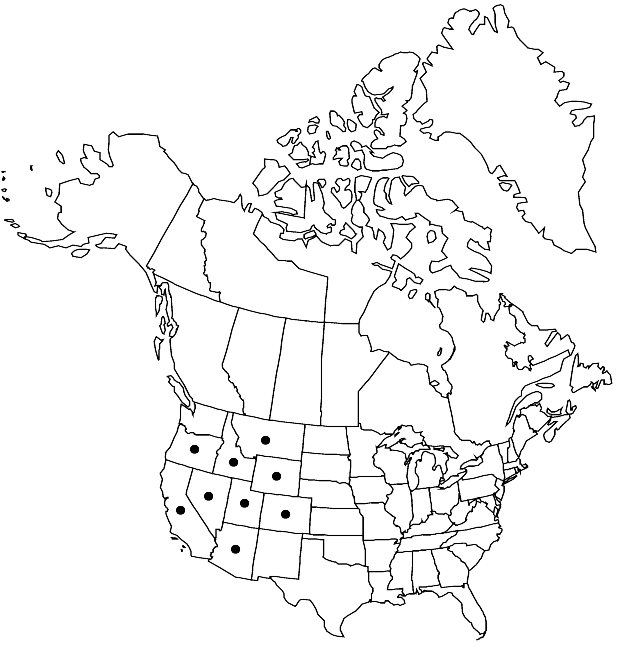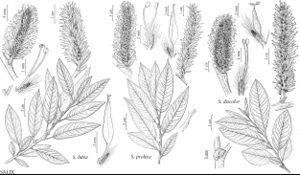Difference between revisions of "Salix lutea"
N. Amer. Sylv. 1: 63, plate 19. 1842.
FNA>Volume Importer |
imported>Volume Importer |
||
| (2 intermediate revisions by 2 users not shown) | |||
| Line 8: | Line 8: | ||
}} | }} | ||
|common_names=Yellow willow | |common_names=Yellow willow | ||
| + | |special_status={{Treatment/ID/Special_status | ||
| + | |code=F | ||
| + | |label=Illustrated | ||
| + | }}{{Treatment/ID/Special_status | ||
| + | |code=E | ||
| + | |label=Endemic | ||
| + | }} | ||
|basionyms= | |basionyms= | ||
|synonyms={{Treatment/ID/Synonym | |synonyms={{Treatment/ID/Synonym | ||
| Line 64: | Line 71: | ||
|publication title=N. Amer. Sylv. | |publication title=N. Amer. Sylv. | ||
|publication year=1842 | |publication year=1842 | ||
| − | |special status= | + | |special status=Illustrated;Endemic |
| − | |source xml=https:// | + | |source xml=https://bitbucket.org/aafc-mbb/fna-data-curation/src/2e0870ddd59836b60bcf96646a41e87ea5a5943a/coarse_grained_fna_xml/V7/V7_128.xml |
|genus=Salix | |genus=Salix | ||
|subgenus=Salix subg. Vetrix | |subgenus=Salix subg. Vetrix | ||
Latest revision as of 22:31, 5 November 2020
Shrubs, 3–7 m, (sometimes forming clones by stem fragmentation). Stems: branches (sometimes ± brittle at base) yellow-gray, yellow-brown, or gray-brown, (sometimes weakly glaucous, with sparkling wax crystals), glabrous; branchlets red-brown or brownish, glabrous or pilose, (inner membranaceous bud-scale layer free, separating from outer layer). Leaves: stipules rudimentary or foliaceous on early ones, foliaceous on late ones, apex acute or rounded; petiole convex to flat, or shallowly grooved adaxially, 4–19 mm, pilose, velvety, or pubescent to glabrescent adaxially; largest medial blade (sometimes amphistomatous), lorate, narrowly elliptic, elliptic, lanceolate, or narrowly oblanceolate, 42–90 × 8–32 mm, 2.8–3.9–5.6 times as long as wide, base rounded, convex, or subcordate, margins flat, entire, serrulate, crenulate, or sinuate, apex acuminate to acute, abaxial surface glaucous, glabrous, pilose, or sparsely long-silky, hairs straight, adaxial dull or slightly glossy, glabrous, pilose, sparsely long-silky, especially midrib; proximal blade margins entire, serrulate, or crenulate; juvenile blade reddish or yellowish green, glabrous or sparsely to moderately densely long-silky throughout, hairs white. Catkins flowering as leaves emerge; staminate stout, slender, or subglobose, 10–45 × 6–12 mm, flowering branchlet 0.5–2 mm; pistillate loosely to densely flowered, stout or subglobose, 13.5–38 × 7–15 mm, flowering branchlet 0.5–7 mm; floral bract brown, tawny, or bicolor, 0.6–1.2 mm, apex acute or rounded, abaxially glabrous or sparsely hairy, hairs curly. Staminate flowers: adaxial nectary narrowly oblong, oblong, square, or flask-shaped, 0.4–0.9 mm; filaments distinct or connate less than 1/2 their lengths, glabrous; anthers yellow or purple turning yellow, (ellipsoid or globose), 0.4–0.8 mm. Pistillate flowers: adaxial nectary oblong, square, or ovate, 0.3–0.9 mm, shorter than stipe; stipe 0.9–3.8 mm; ovary pyriform or ovoid, glabrous, beak gradually tapering to styles; ovules 12–24 per ovary; styles 0.1–0.6 mm; stigmas flat, abaxially non-papillate with rounded tip, or 2 plump lobes, 0.14–0.2–0.3 mm. Capsules 3–5 mm. 2n = 38.
Phenology: Flowering Mar–May.
Habitat: Banks of streams, meadows, hillsides, gullies, sandy-clay, sandy or rocky substrates
Elevation: 600-3100 m
Distribution

Ariz., Calif., Colo., Idaho, Mont., Nev., Oreg., Utah, Wyo.
Discussion
The possible occurrence of Salix lutea in Ginkgo Petrified Forest Park, Washington, needs to be investigated.
Hybrids:
Salix lutea forms natural hybrids with S. arizonica.
Selected References
None.
